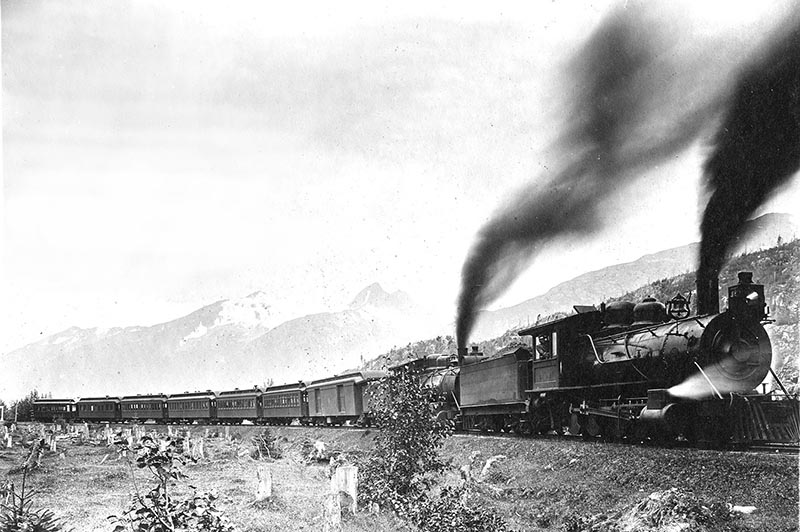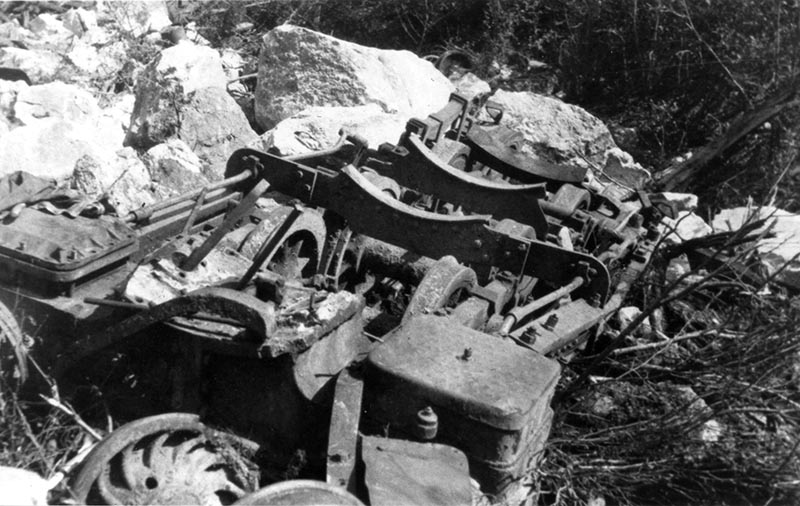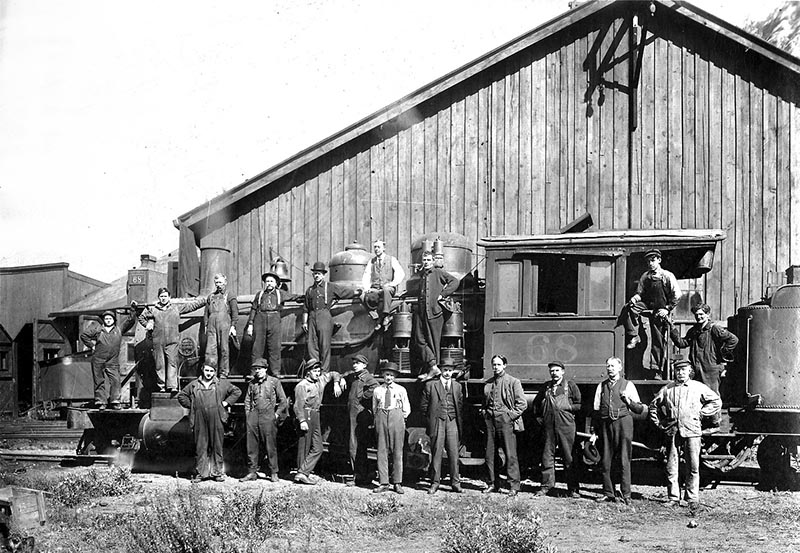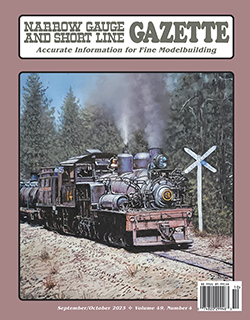The White Pass & Yukon Route’s railroad was finished in July 1900 and by the end of 1901 there were 17 locomotives on the roster. The year 1902 saw the lighter and slower locomotives being sold off. The mainstays of the power were the four chunky 59-class outside framed ten-wheelers (January/February 2023 GAZETTE), the brutish 2-8-0 No. 61 (March/April 2023 GAZETTE), and the stout ten-wheeled No. 62 (see the May/June 2023 GAZETTE). All of these locomotives had been delivered by the Baldwin Locomotive Works of Philadelphia, Pa., in 1900 and 1901.
Life for the WP&YR had settled down after the various gold rushes had faded. There was still plenty of mining and prospecting going on in Alaska and the Yukon Territory, so rail and steamer traffic kept the WP&YR comfortably afloat. Copper had been discovered some four miles northwest of Whitehorse, Yukon Territory in 1897 and a few claims were staked in 1898. These prospects were in a broad arc stretching from a point just to the northwest of Whitehorse, to a point about ten miles south of Whitehorse. This arc was known as the Whitehorse Copper Belt. The construction of a seven-mile branch of the rail-road to this copper-rich region had been mentioned in the newspapers in 1900, but it wouldn’t be built until 1907.

ABOVE: WP&YR 68 and WP&YR 69 double-head a short passenger train circa 1913. With a combined tractive effort of well over 60,000 lbs. and only seven passenger cars, the title of this photograph should be “Overkill.” —Unknown photographer, Boerries Burkhardt collection
Most of these early copper mines were small, low-budget operations whose owners hoped to sell out to larger operations. Three wagon roads were built to the larger operations in 1902; however, it was another five-years before the WP&YR actually built the Copper Mines Branch. Starting at a point on the WP&YR’s main line approximately 6 miles south of Whitehorse known as Macrae, construction of the branch commenced on October 21, 1907. The first seven miles of the branch were completed in September 1908. Construction costs thus far were over $340,000.00. In 1910 another 4.29 miles were added to the branch. A wye on the main line at Macrae (MP 103.5) fed the branch which had a scale track, seven bridges, one water tank, two passing sidings, two spurs serving mines, and another wye at the end of the branch serving another mine.
In preparation of the heavy ore traffic anticipated from the now planned Copper Mines Branch, the White Pass ordered a unique and very large 2-8-0 locomotive from the Baldwin Locomotive Works on January 6, 1907. This loco-motive was not to be used on the branch, but rather to help haul the heavy loads up the short southbound grades out of Bennett (MP 40.3) and Fraser (MP 27.7), British Columbia. WP&YR No. 68 was built in June 1907 and bore construction no. 30998. The locomotive had a 66-inch diameter boiler operating at 180 psi, 19- x 22-inch cylinders, and 40-inch diameter driving wheels. These statistics yielded a tractive effort of over 30,300 lbs., that would be a C-30 in D&RG terminology (C = consolidation or a 2-8-0, 30 = 30,000 lbs. TE). Number 68 was not used much, if ever, during the win-ters as her large outside counterweights would come down on chunks of ice and lift her right off the rails.

ABOVE: WP&YR 68’s frame after being hit by the rockslide at Slippery Rock, mile post 15.3, in 1917. The impact of the rocks ripped the boiler from the frame and killed the crew. When studying the rocks in this photograph, take note that the locomotive’s drivers were 40-inches in diameter. —Unknown photographer, Carl Mulvihill collection
Number 68 was thought to have been the largest narrow gauge locomotive in the world at the time she was built. Weighing in at 133,000 lbs., and carrying 120,000 lbs. on her drivers, she was a real brute on the railroad. Number 68 could handle about 175 tons up the grades north of Skagway, Alaska, and was well regarded by the men of the White Pass. WP&YR 68 did not venture north of Bennett because lighter 45-lb. rail was used between Bennett and Whitehorse, and she was just too heavy for that sized rail. From Bennett south to Skagway, the rail was 56 lb., and she was used extensively as a helper on this portion of the line, and it was along this portion that No. 68 along with her crew met their demise…




